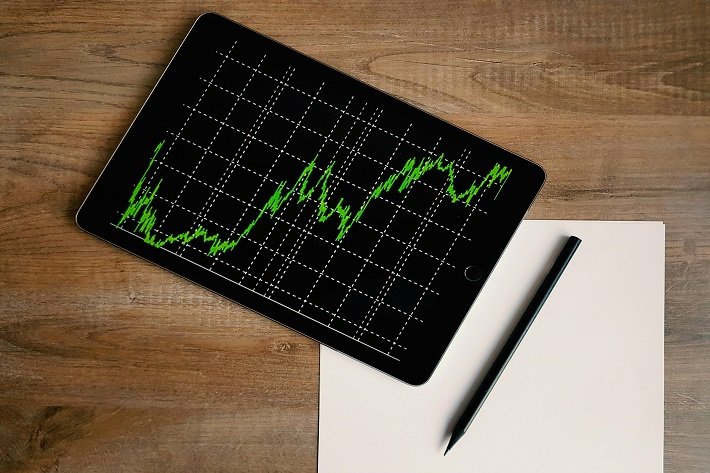Futures trading strategies are often a hot commodity. There are many different trading styles when it comes to day trading futures, some of which you can learn about if you learn how to day trade through guides similar to what Investors Underground provides.
Traders scalp futures swing trade futures and overall day trade futures. Sometimes even holding positions overnight. The best futures trading strategies for beginner traders are momentum trend trading strategies.
The bullish long pullback strategy and the bearish short pullback strategy. Both of these futures trading strategies are the best because they can be implemented in any time frame.
Intraday or swing. They are both very high-probability futures trading strategies because they follow the momentum of the trend! When it comes to futures trading, retail traders will find more in this course for success if they stick to the trend that the market presents.
What are Equity Futures?
The futures market has been around for a long time. Originally used to hedge prices, by cementing a price for a good in the future. Such as a bushel of wheat. It was insurance for farmers should the price go down. Now it’s used in a more speculative sense to generate money from the markets. There are still uses in the world of hedging for futures contracts.
However, there are also equity index futures contracts. These are cash-settled rather than physically settled. Physically settled assets are commodities like oil futures. Upon expiry of the contract, you are delivered 1000 barrels of oil per the contract you held. The cash-settled futures are used for speculative reasons to earn a financial gain in the market.
There are many equity index futures, the most common and most liquid is the S&P 500 E-mini contract. Most futures traders trade either the S&P 500 E-mini (ES) or Crude Oil futures (CL).
Also read: How To Start Forex Trading In India For Beginners
Momentum Trend Trading Strategies
Why are momentum trend trading strategies the best futures trading strategies? And maybe the best trading strategies period! This is because the retail trader is unable to influence the market. Instead of butting heads with a big mover that can flood millions of dollars into the market to make it go up or down. Jump on the side of the trend and ride the big money momentum to either side. Who are these big movers? Institutions or banks that need to hedge or get massive client orders into the market.
The momentum trend trading strategy has proven time and time again the highest probability trading strategy that we have personally used and our members have used. The trend will only continue if the volume in the direction continues to rise. The bull trend momentum means that asset price is creating higher highs and higher lows on strong volume. The bear trend momentum means the asset price is creating lower highs and lower lows.
Below is an example of the bear momentum trend on TradingView. This is a chart of the S&P 500 futures. The E-Mini ES continuous contract. You can see the price is falling, creating lower lows and lower highs. All the while that volume is increasing. That means more sellers are coming into the market and momentum to the downside is continuous. The momentum trend ends when the green candles start forming and volume begins to increase as the price starts going up.
Futures Times Frames
The best futures trading strategies do not have set time frames. Different traders can trade the same strategy over different times This means some traders can trade the intraday pullback based on a 2-hour time frame and smaller scale. Or even take that to the next level and trade over a set of hours on the macro trend of the market rather than the micro trend of the market. A key component to trading futures is using anything other than a time chart.
In the best futures trading strategies, traders will deviate from time-based charts. Gravitate towards tick-based charts that show you unfiltered data. The futures market moves tick by tick based on contracts traded. A range bar based on ticks several of trades bar is your best friend. No matter the time length you plan to trade. We will be using a range tick chart in the examples below.
Also read: Pros And Cons Of Forex Trading
The Strategy of Future Trading
Below you can see the first of the best futures trading strategies. It is an example that will be explained in full. The bullish pullback strategy begins with trend identification and trying to jump on the side of the trend as momentum continues. In this example, le the trend is to the upside and momentum is increasing to the upside.
The highest probability trade would be in the S&P 500 E-mini futures market. Which is pictured below. You would want to buy a contract in this market to capture the upside. It is not as simple as buying and closing your eyes because you have to consider risk management. In this example, it seems simple to just buy it anywhere and make money. They are not always this easy.
To confirm the upside is strong and momentum is to the bull side, you can check the volume at the bottom of the chart, the black bars. As resistance levels or previous highs on the session (the first green ellipse) are broken, volume increases. Strong volume in the direction of the trend means there is more upside in the move.
Remember one point of movement in the ES futures market is worth $50 up or down on one contract. That means you do not want to take a lot risksisk or a lot of points against you. For example, if you get anywhere and the market drops 3 points against you. You take $150 of risk per contract, without the guarantee it will go back up. You can only see the left of the chart; we don’t know what’s coming. So, let’s limit risk! As we do each day in the trading room.
Steps Future Trading
Step 1:
Find the direction of the trend. In this case, the bullish trend can be identified if the market prints higher highs and higher lows. That means when a previous high, no matter if it’s within 5 minutes or 5 days of the trend you are looking at, is broken. The retrace move should not get below that broken high. There is leniency in this trend movement. The maximum the price should pull back is above the previous low. Such is the case in the example below when the first peak is formed at 2979 just above the yellow open line. The next move higher breaks that peak and goes to the 2981 level. Where the first green ellipse is and the red line indicates the previous day’s high. On the pullback of that move, the price does not drop below the yellow line. Indicating a higher low.
Step 2:
Identify the momentum strength in the trend. We have identified a bullish trend. Now, look at the volume each time the market swings higher. Is volume increasing? Yes! That solidifies the strength in momentum because a lot of buyers are coming in taking over the sellers. This means there is more upside.
Step 3:
Identify a level where re price stalls on the pullback and gets long at that level. You can do this by looking for entries at the previous broken peak. Alternatively, identify where the price pulls back based on rotations in the candles. This means candles printed side by side at a level. This can be seen at 2990 at the second ellipse.
Step 4:
Risk management. The trade is not over the second your limit is hit. You have to manage that trade common misconception traders make is that when you enter a trade you either take the full loss or the full profit. You can limit your loss by taking the trade out early if you do not qualify for the move anymore.
The Bearish Pullback Strategy
The second strategy is very similar to the first. The only difference is in this case you have a bearish trend. A lot of people do not know you can make money on the downside of markets. With the same amount of risk that you would take to the upside. Money is made faster to the downside. A quick tip is markets take the stairs up and the escalator down. Meaning when they fall they fall fast.
The bearish pullback strategy begins with trend identification and trying to jump on the side of the trend as momentum continues. In this example, the trend is to the downside and momentum is increasing to the downside. The highest probability trade would be shorter in the S&P 500 E-mini futures market. Which is pictured below. You would want to sell a contract in this market to capture the upside.
Steps Bearish Pullback
Step 1:
Find the direction of the trend. In this case, the bearish trend can be identified if the market prints lower highs and lower lows. That means when a previous low, no matter if it’s within 5 minutes or 5 days of the trend you are looking at, is broken. The retrace move should not get above that broken low. There is leniency in this trend movement.
The maximum the price should pull back is below the high low. That can be seen in the example below, in the first green ellipse. When that low is broken, the price pulls back into that area and then continues lower. There are changes in the trend in this example and a trader needs to be malleable to that. As long as laws are not broken to the upside, the downtrend will continue. This can be seen in the second and third ellipse.
Step 2:
The second step is to identify the strength of the trend. This is the momentum of the bear trend in this case. When the price drops you notice an increase in volume. That means momentum to the downside is strengthening. This means more market participants are selling their contracts than there are buying. The sellers are getting more aggressive to the downside.
Step 3:
Now the trader needs to find the highest probability entry. This should be at a pullback level at which the trend will continue. In the case of the first ellipse, you look for a pullback into the broken low. The second ellipse is the same example. In this case, you get the rotations that confirm the downside move. Rotations indicate a fight at a level. power struggle or to keep the momentum going in that trend direction. The best example may be the third ellipse. Price breaks the current session lows, retrace, rotates, and drops. This is seen at the 2987 level or the pivots S1.
Step 4:
Managing risk to the downside is very important. This is because moves lower are usually more volatile and faster, so you have to manage the risk you take well. Traders can get away with tighter risk to the downside. And larger profit-takers because the moves swing violently lower when momentum is on your side. As long as volume increases as price drops you can make larger profits.
Also read: Is Forex Trading For Beginners Safe
Conclusion
The best futures trading strategies involve pullback trades. This is because you take advantage of the momentum and the direction of the trend that is created by big money. Big money can move markets, unlike retailers. Jumping on the side of the trend limits your risk and increases the probability of profit.
There are natural risks of loss involved with futures trading especially since the leverage is high. Risk management is a pivotal part of these strategies. It will ensure that you are preserving capital and taking advantage of the best opportunities the market presents. The pullback futures trading strategies can be used in any market. We used the S&P 500 E-mini equity futures as an example because this is the most liquid futures contract.
















